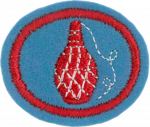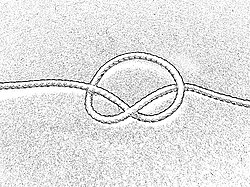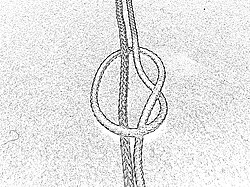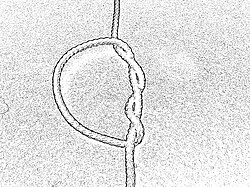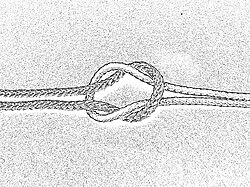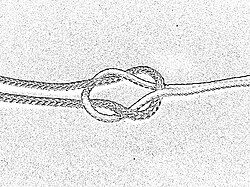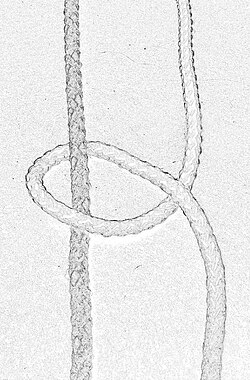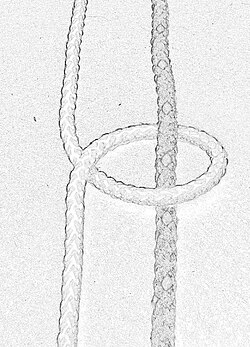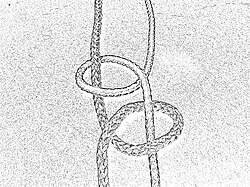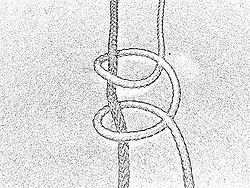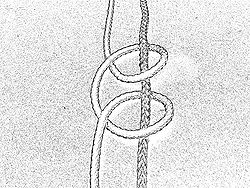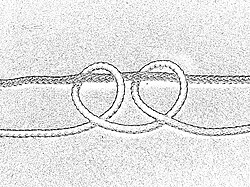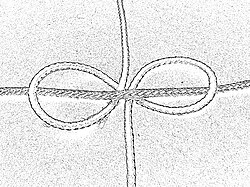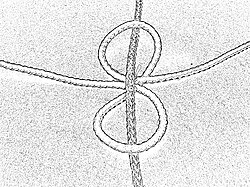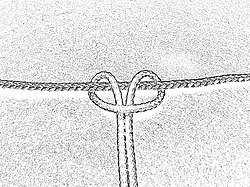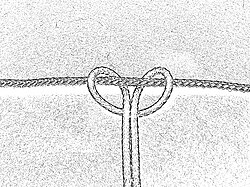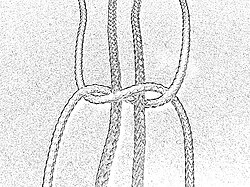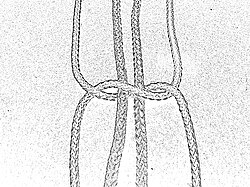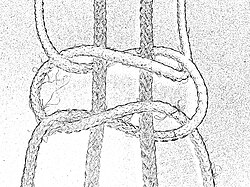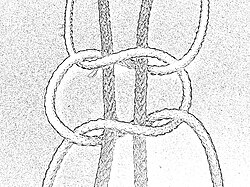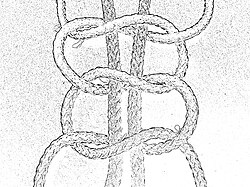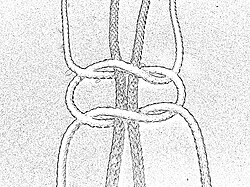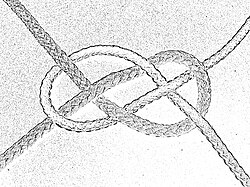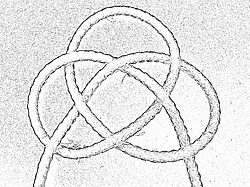Especialidades JA/Macramé/Respuestas
| Macramé | ||
|---|---|---|
| Asociación General
|
Destreza: 1 Año de introducción: 1975 |
|
Requisitos
|
La especialidad de Macramé es un componente de la Maestría Artesanía. |
1
Sailors made macramé objects at sea, and sold and bartered them when they landed, thus spreading the art to places like China and the New World. Macramé remained a popular pastime with 19th- century British and American seamen, who called it square knotting after the knot they most preferred in making hammocks, bell fringes, and belts.
Macramé reached its zenith in the Victorian era. Sylvia's Book of Macramé Lace, a favorite at that time, urged its readers "to work rich trimmings for black and coloured costumes, both for home wear, garden parties, seaside ramblings, and balls- fairylike adornments for household and underlinens ..." Few Victorian homes went unadorned.
While the craze for macramé waned in later years, it is now popular again, for making wall hangings, articles of clothing, bedspreads, small jean shorts, tablecloths, draperies, plant hangers and other furnishings.
2
Cotton seine twine is recommended for the beginner because with this material, the patterns are easier to see and the knots are easy to tighten.
3
Common materials used in macramé include cotton twine, hemp, leather or yarn.
- Cotton twine
- Soft, flexible, easy to obtain, cheap
- Hemp
- Very strong, easily acquired, natural look
- Leather
- Strong, stiff, doesn't fray
- Yarn
- Various colors, cheap, flexible
4
Overhand Knots
Adventist Youth Honors Answer Book/Knot/Overhand
Square Knots
Adventist Youth Honors Answer Book/Knot/Square
Half Hitches
Clove Hitches
Adventist Youth Honors Answer Book/Knot/Clove hitch Adventist Youth Honors Answer Book/Knot/Constrictor
Lark's Heads
Single Hitches
Macramé Knots
Josephine Knots
5
Overhand knots can be used to tie two cords together at the bottom of a piece, to fasten a cord to a bead or pearl, or to serve as a decorative knot in the pattern.
6
The length of cord needed for a finished product is directly dependent on the types of knots used. It also depends on how much knotting is done on a given cord. Anchor cords will have fewer (if any) knots compared to working cords. A general rule of thumb is to allow yourself five times more cord than the length of the product. A better guideline is to experiment. Tie a short section (at least a couple of inches (10 cm) long). Measure it, and then untie it and measure the amount of cord used. If 2 inches of your sample required 12 inches of cord, you will need six times as much cord.
7
You will want to search the internet or check books for patterns. Have fun on the practical part of the Honor.
8
Vea los nudos anteriormente. ¡Diviértase al crear!
Referencias
- Categoría: Tiene imagen de insignia
- Adventist Youth Honors Answer Book/Honors/es
- Adventist Youth Honors Answer Book/es
- Adventist Youth Honors Answer Book/Skill Level 1/es
- Categoría: Libro de respuestas de especialidades JA/Especialidades introducidas en 1975
- Adventist Youth Honors Answer Book/General Conference/es
- Adventist Youth Honors Answer Book/Arts and Crafts/es
- Adventist Youth Honors Answer Book/Arts and Crafts/Primary/es
- Adventist Youth Honors Answer Book/Artisan Master Award/es
- Adventist Youth Honors Answer Book/Stage 0/es
- Adventist Youth Honors Answer Book
